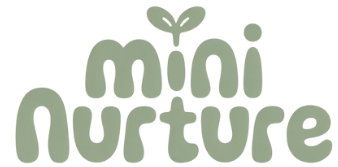Toddlers need activities that help them grow while keeping them engaged and happy. Outdoor play, hands-on art, and simple learning games give toddlers a chance to explore, build skills, and use their energy in positive ways. The best toddler activities combine creativity, education, and outdoor fun to support early development.
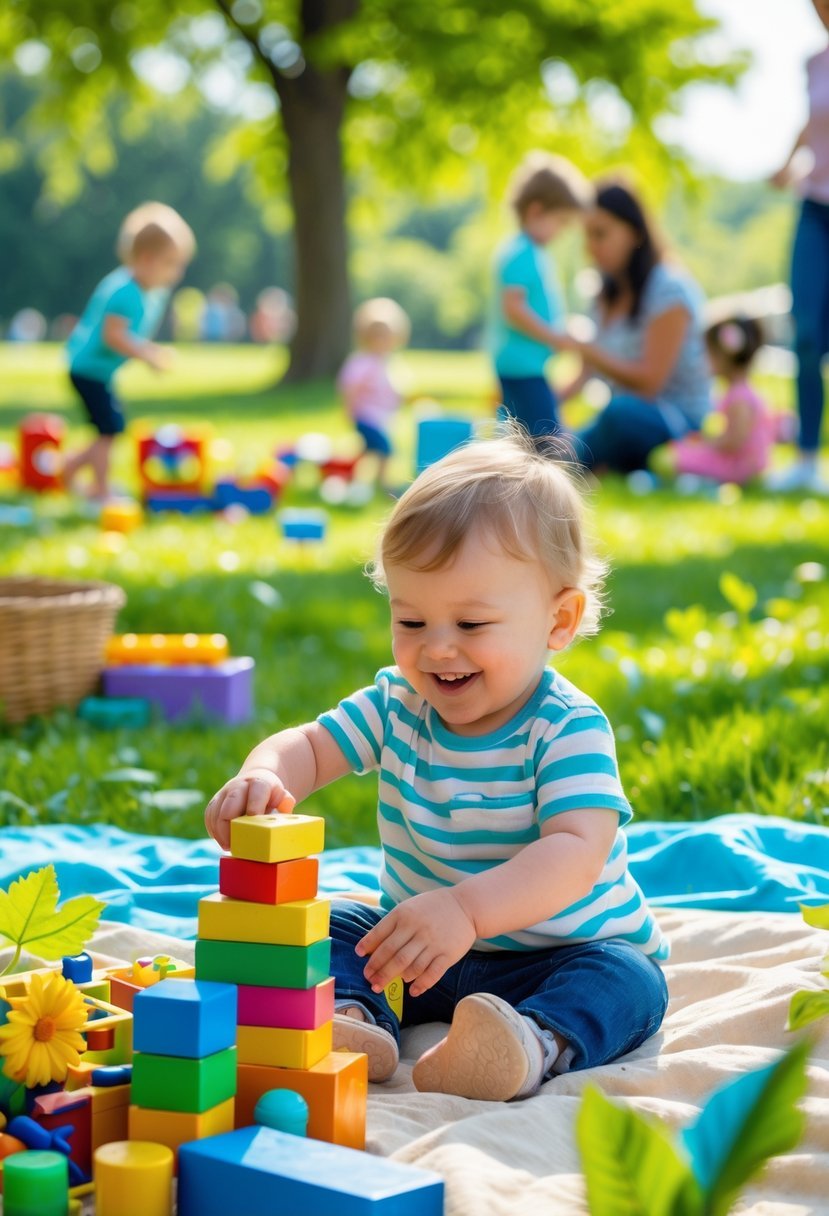
Parents and caregivers can easily find exciting ideas that use common household items or natural materials. These activities encourage movement, sensory play, language, and problem-solving, making playtime both fun and meaningful. With a variety of options, toddlers can stay active and curious every day.
Focusing on simple, safe, and enjoyable experiences helps toddlers learn without overwhelming them. Exploring nature, creating art, or trying small science experiments all contribute to their growth in unique ways. This guide offers a mix of ideas to keep toddlers engaged and thriving.
Key Takeways
- Outdoor play helps toddlers develop physical and sensory skills.
- Creative activities support fine motor skills and imagination.
- Educational games promote early learning and curiosity.
Outdoor Activities for Toddlers
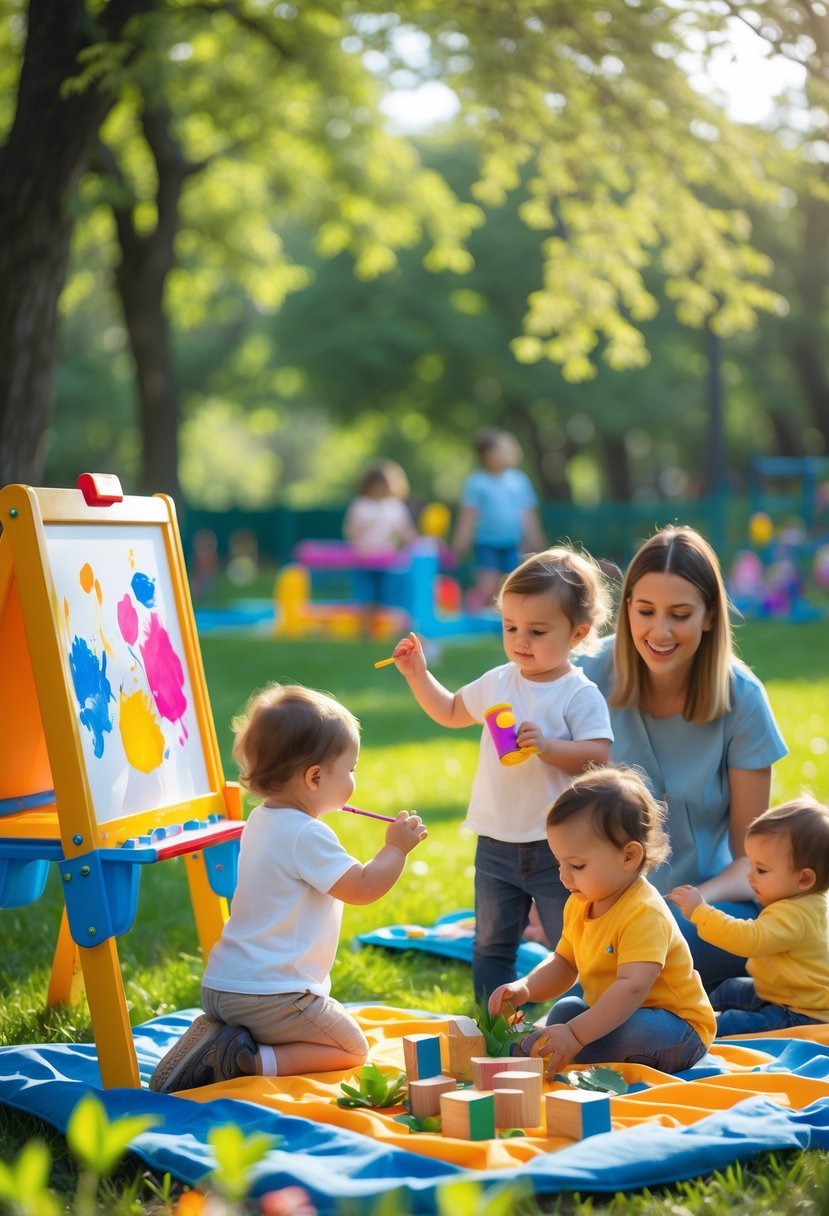
Outdoor play for toddlers offers many hands-on ways to learn and enjoy fresh air. Simple tools and natural settings encourage curiosity, movement, and sensory exploration. Activities can include watching birds, playing with water, or moving through playful courses designed for little ones.
Nature Exploration and Wildlife
Toddlers benefit from exploring nature by observing animals, plants, and natural objects. Parents can set up a bird feeder or a bug hotel in the yard to attract local wildlife. Watching birds or small insects encourages patience and focus.
Collecting leaves, rocks, or pinecones during a nature walk helps toddlers engage their senses and develop vocabulary. Using a magnifying glass or a simple checklist can make this even more exciting. These activities promote respect for living things and teach early science skills.
Water Play Adventures
Water play is a favorite outdoor activity for toddlers that supports both fun and learning. Tools like water tables, spray bottles, and water balloons invite children to explore different water textures and temperatures safely.
Splashing in a shallow tub, filling and pouring containers, or chasing giant bubbles stimulates fine motor skills and hand-eye coordination. Water activities also offer a chance to practice social skills by sharing tools and taking turns. Simple water games can be set up quickly and often require very little preparation.
Active Games for Outdoor Fun
Physical activity outdoors builds strength and coordination. Setting up obstacle courses with items like traffic cones, hula hoops, and tunnels allows toddlers to run, jump, crawl, and balance. These movements help develop gross motor skills.
Games such as balloon volleyball or color hop encourage toddlers to move while learning new concepts like colors and teamwork. Riding balance bikes nearby also improves spatial awareness and confidence. Parents can adjust the difficulty of these games to match their child’s abilities.
Sensory Outdoor Experiences
Creating sensory-rich outdoor environments enhances toddlers’ ability to learn through touch, sight, hearing, and smell. Sensory gardens with different textures, smells, and colors are excellent for this purpose.
Activities might include sticky art with contact paper and leaves or stamping with natural objects like acorns and sticks. Sensory bins filled with sand, water, or dirt allow children to dig, scoop, and explore various materials freely. These experiences support fine motor skills and focus. Supervising toddlers closely during these activities ensures safety while encouraging curiosity.
For more ideas on engaging toddlers outdoors, visit 45 Outdoor Activities for Toddlers to Help Them Grow & Learn.
Creative and Messy Play Ideas
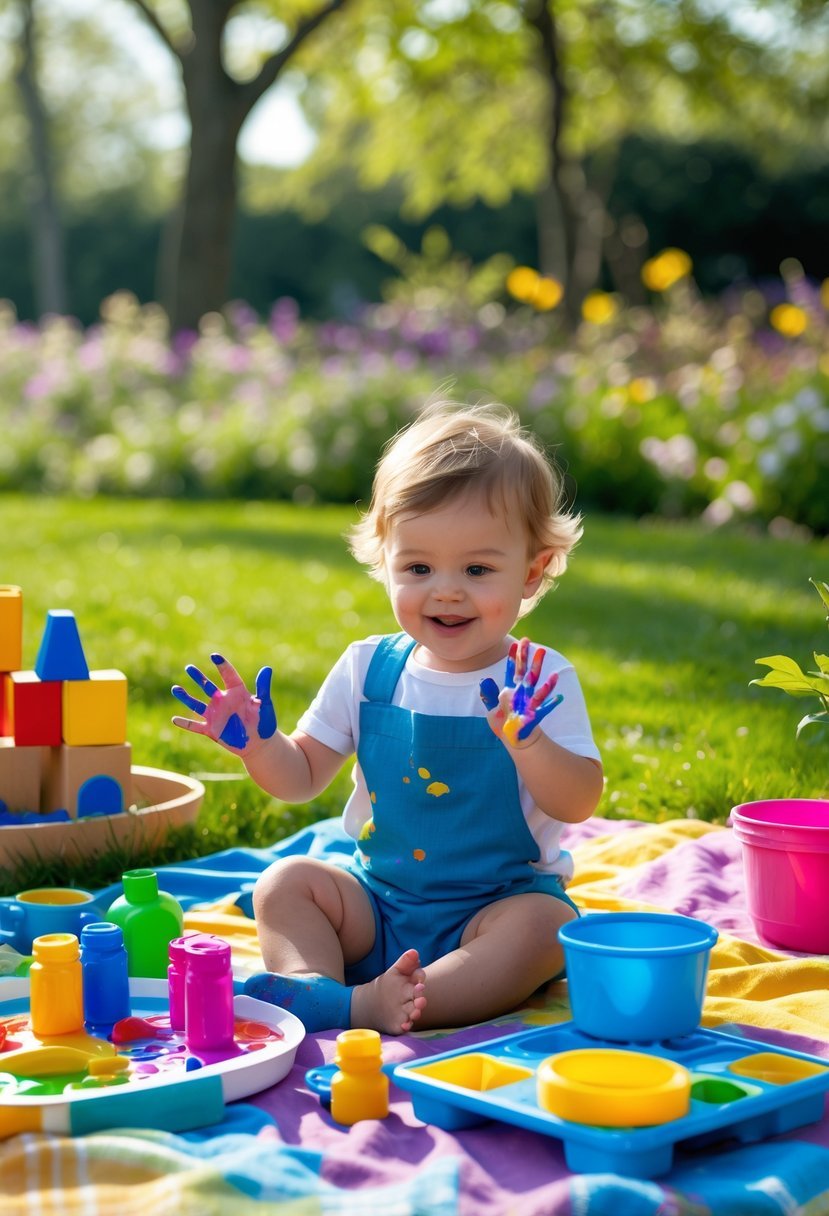
Messy play lets toddlers explore textures, colors, and shapes while developing creativity and motor skills. Using everyday nature items and recycled things encourages imagination and environmental awareness. Water and bubbles add excitement, helping children experiment with movement and cause-effect. Sensory projects often mix materials like paint, mud, and water for hands-on learning.
Art with Nature and Recycled Materials
Toddlers can create art using leaves, sticks, flowers, and smooth rocks. Collecting these items outdoors teaches observation and connection to the environment. Painting rocks with washable paint turns natural objects into colorful decorations or story stones.
Recycled materials like cardboard, paper rolls, and bottle caps offer endless crafting options. Children can glue, paint, or build with these to make collages or simple sculptures. Using safe, everyday items this way encourages creativity and reduces waste.
Supervising helps ensure safe use of materials, and setting up a dedicated space keeps the mess contained. This mix of nature and recycled art supports both creativity and early motor skills.
Bubble and Water-Based Art
Bubble stations with different wands allow toddlers to explore shapes and sizes. Giant bubbles fascinate kids and develop hand-eye coordination. Homemade bubble solutions can be made with simple household ingredients.
Water play adds another layer to messy art. Squirt gun painting uses water mixed with washable paint on paper or outdoor surfaces. This creates colorful patterns while encouraging physical movement.
Water walls or splash zones made from recycled bottles and tubes let children experiment with flow and gravity. These activities combine fun and science in engaging ways that invite repeated exploration.
Sensory and Messy Play Projects
Sensory play involves materials like mud, shaving cream, and slime to engage multiple senses. Mud kitchens allow toddlers to mix mud with water and natural elements, mimicking cooking.
Shaving cream painting offers a simple, tactile experience. Adding food coloring boosts creativity without extra mess beyond easy clean-up.
Slime provides a stretchy, gooey texture that fascinates toddlers. Sensory pathways mix textures such as pebbles, sand, and grass for barefoot exploration.
Keeping cleaning supplies handy, like damp towels or buckets of soapy water, helps manage the mess. These projects build fine motor skills and sensory awareness while keeping children actively engaged.
For more ideas, see 20 epic outdoor messy play ideas for early years.
Educational and Fine Motor Activities
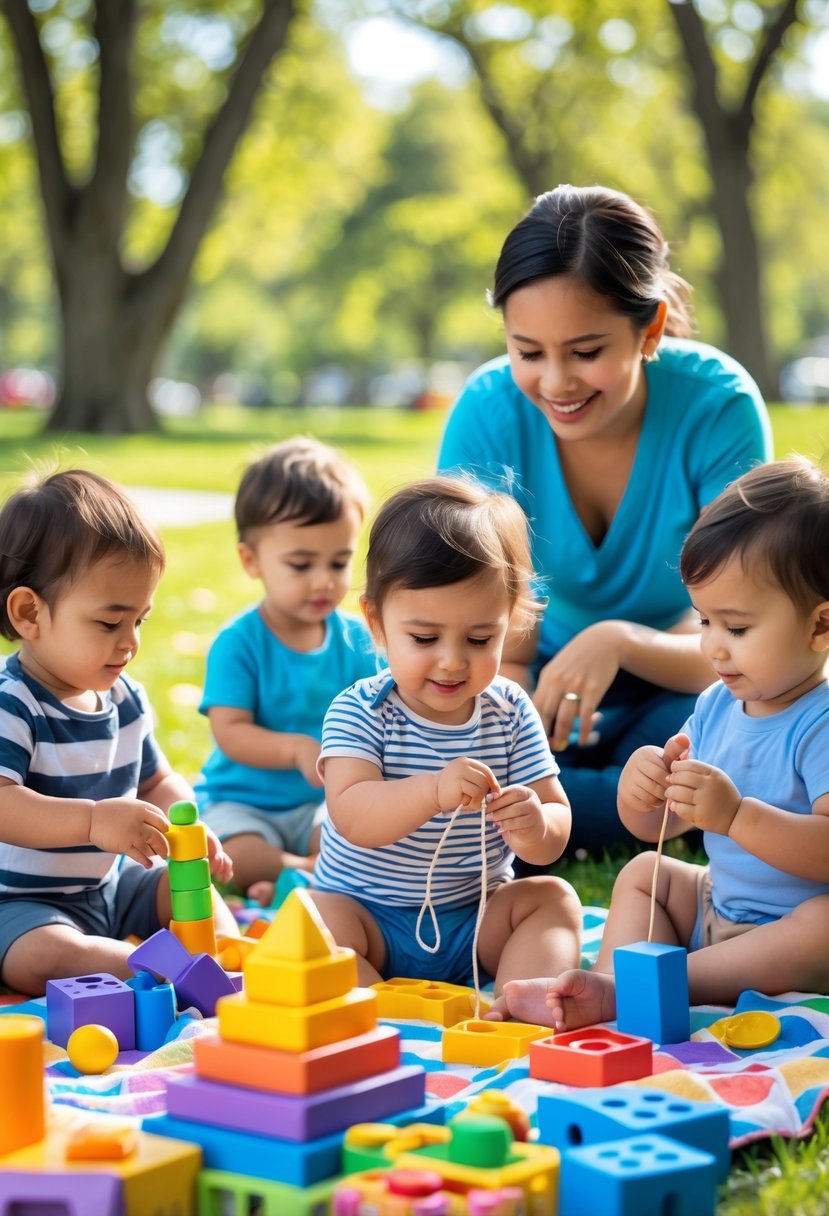
Toddlers develop important skills through activities that focus on hand movements, sensory experiences, and early learning concepts. These activities support their independence and prepare them for more complex tasks. Engaging in playful, hands-on learning helps toddlers connect physical, social, and cognitive skills.
Building Fine Motor Skills
Fine motor skills involve small muscles in the hands and fingers. Activities like stacking blocks, threading beads, or using child-safe scissors improve hand-eye coordination and muscle control. These tasks help toddlers manage everyday actions such as buttoning clothes and holding utensils.
Sensory play also supports fine motor development. Playing with playdough, water, or rice bins encourages squeezing, pinching, and grasping motions. Early childhood educators often suggest using tools like tweezers or clothespins to increase finger strength.
Regular exposure to fine motor tasks increases confidence and control. It lays the foundation for writing and more detailed handwork later in life.
Simple Learning Games
Games that involve sorting, matching, and counting stimulate early cognitive skills. Activities such as shape sorters or color matching help toddlers learn concepts like basic math and pattern recognition.
Many games also challenge problem-solving. Puzzles, stacking cups, and hide-and-seek with pairs develop concentration and memory.
Incorporating everyday objects like buttons or pom-poms keeps learning fun and practical. These simple games teach cause and effect, promote focus, and improve hand dexterity at the same time.
Role Play and Imaginative Learning
Role play encourages language development, social skills, and creativity. Using toys like play kitchens or dress-up clothes, toddlers mimic real-life situations, which enhances communication and empathy.
Imaginative play offers open-ended learning where toddlers tell stories and act out scenarios. This kind of play supports problem-solving and emotional understanding.
Early childhood educators highlight the social benefits of outdoor pretend play, where toddlers learn to cooperate and share ideas. Such activities strengthen confidence and imagination while building important real-world skills.
For activities focused on fine motor skills and creative play ideas, see 100+ Fine Motor Activities for Kids.
Frequently Asked Questions
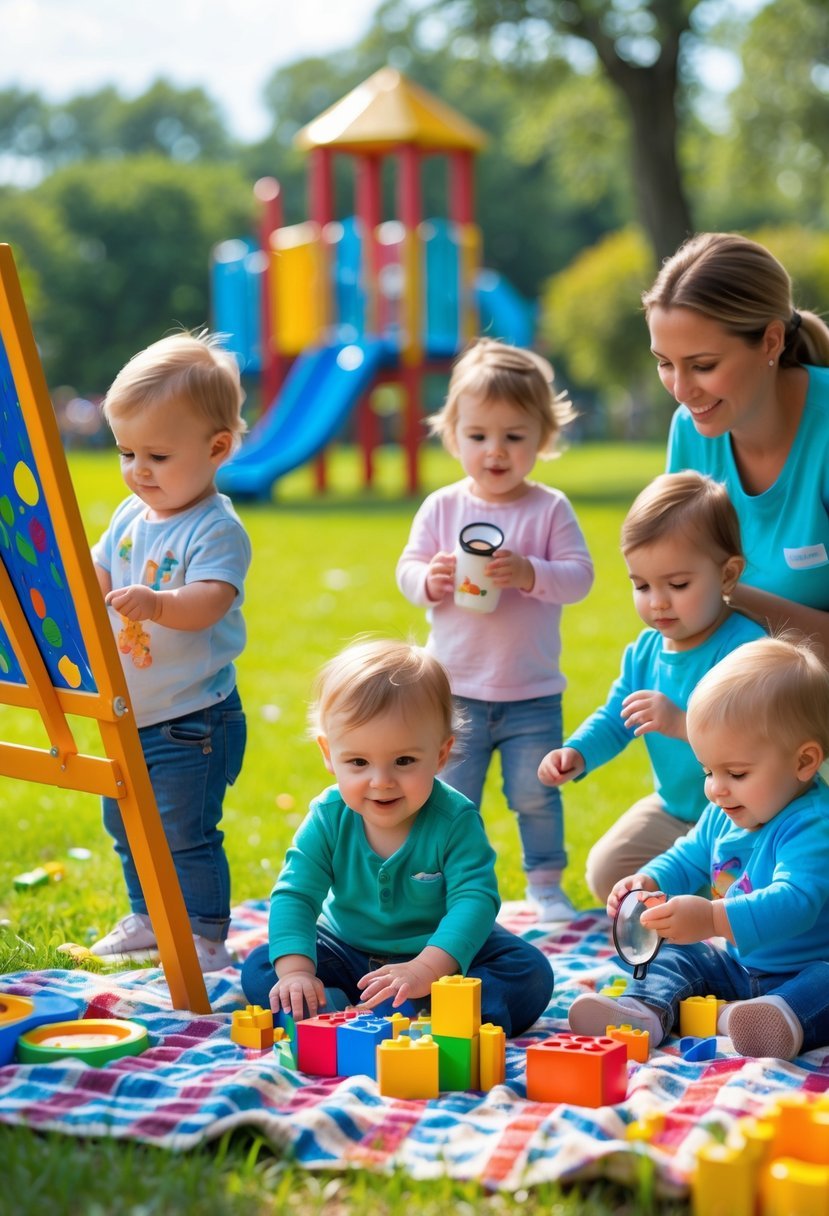
Toddlers need activities that are safe, engaging, and helpful for their growth. Outdoor play should include learning, physical movement, and social games appropriate for their age.
What are safe outdoor activities for toddlers aged 1-2 years?
Safe activities include supervised walks, playing with soft balls, and using age-appropriate ride-on toys. Simple nature exploration like touching leaves or water play under close watch keeps toddlers safe and curious.
How can I incorporate educational elements into my toddler’s outdoor play?
Introduce sorting games using natural items like sticks or stones. Use role play with pretend kitchens or market stands to build language skills. Counting flowers or talking about colors during walks also adds learning.
What are the best physical activities for toddlers to promote development?
Activities like running, climbing small structures, and kicking balls help improve balance and coordination. Outdoor play for at least 20 minutes daily supports gross motor skills and overall health.
Can you suggest outdoor group games suitable for toddlers at school?
Simple games such as “Follow the Leader,” “Duck Duck Goose,” and group singing with actions work well. These games encourage social skills like taking turns, listening, and cooperating.
What are some creative outdoor play ideas for 2-3-year-old children?
Setting up nature scavenger hunts, creating art with sticks and leaves, and building with sand or water encourage imagination. Pretend cooking outdoors with play kitchens or baskets of pretend food supports language and creativity.
How does engaging in outdoor activities benefit a toddler’s growth and learning?
Outdoor play improves physical abilities like balance and coordination. It also helps reduce anxiety and promotes emotional well-being. Social skills develop as toddlers interact and communicate with peers in open spaces.
For more ideas on safe outdoor play, visit 25 Outdoor Activities for Toddlers That Makes Them Thrive.

